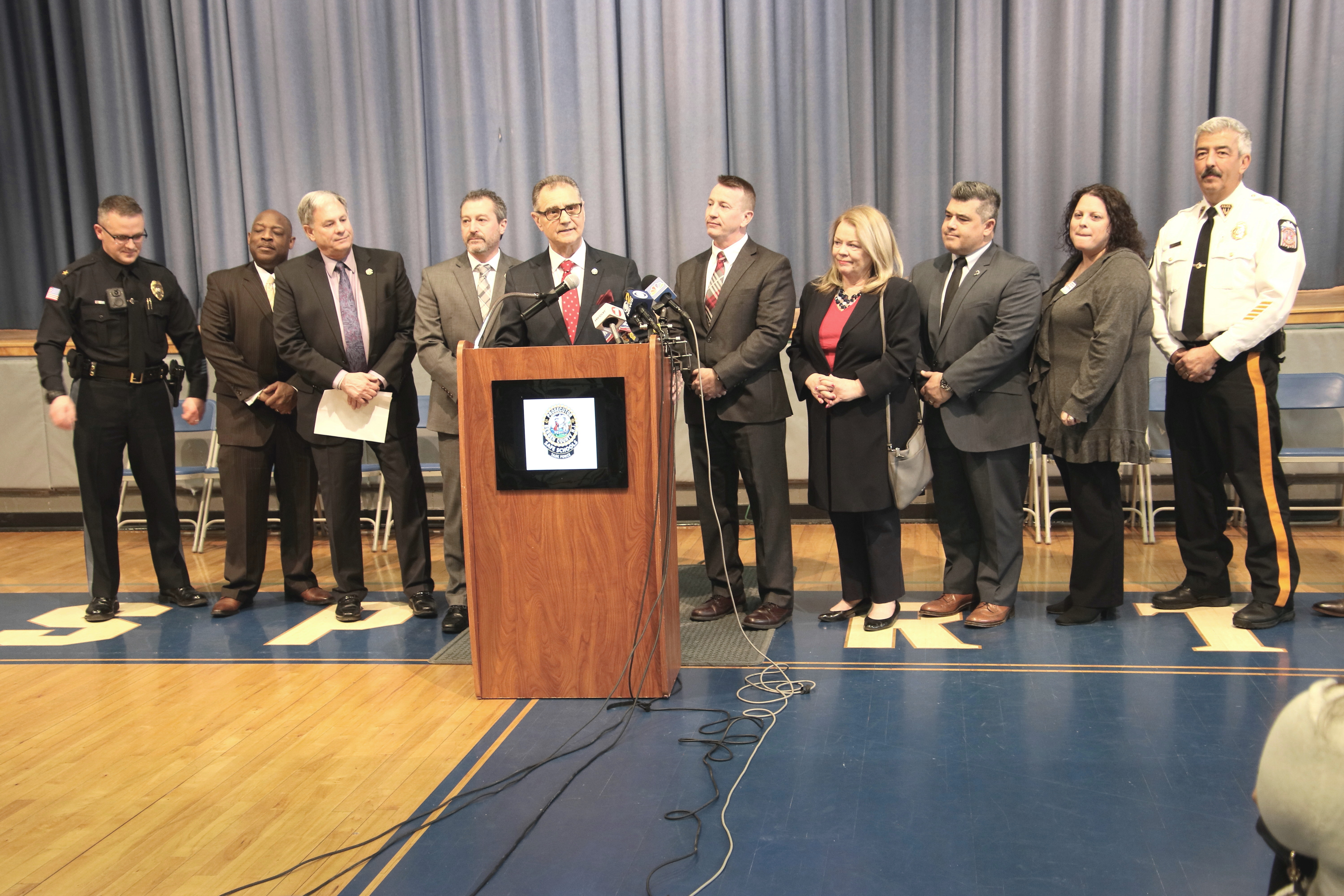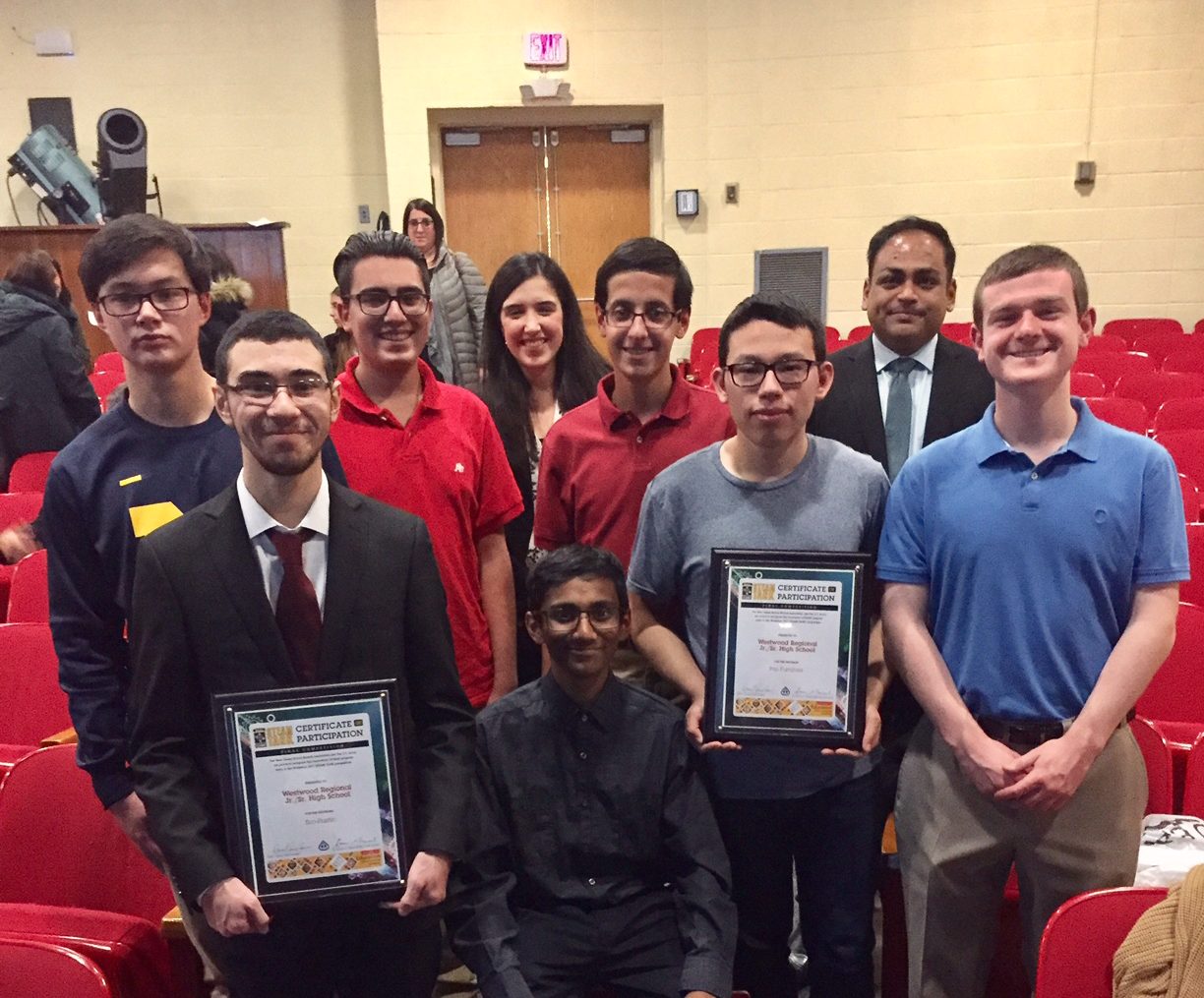
BY MICHAEL OLOHAN
OF NORTHERN VALLEY PRESS
TENAFLY, N.J.—After recommending Tenafly’s school district hire special law enforcement officers for its six schools at the Dec. 10, 2018, meeting, the school superintendent decided to hold off on that recommendation following a chorus of opposition from parents strongly against full-time armed police officers in schools.
While Schools Superintendent Shauna DeMarco was adamant Dec. 10 about the value of having an armed officer in each Tenafly school—several times highlighting the importance of an on-site armed first responder during an active shooter situation—she said at the Jan. 7 school board meeting that she did “not assess this to be the proper time to move forward on this” due to public opposition and her desire to accomplish other educational, curriculum, parent engagement and professional development goals for the district.
DeMarco told Northern Valley Press Jan. 4 that she would not be proposing a motion at the Jan. 7 meeting to budget for the officers, estimated at $350,000 for year one, and about $300,000 for each following year.
She said she made clear her views favoring the hiring of Class III, or special law enforcement officers, and was asked after she was hired to provide a public presentation by school board members.
‘Affordable…and sustainable’
Asked whether the cost could be handled in 2019’s upcoming budget, she said “multiple adjustments” can be made and she “was very confident it’s not only affordable but also sustainable.”
“It is never my intent to try to change people’s beliefs and core values. The last thing I would want was to have a super-close board vote for people [officers] being hired into positions that are then super-controversial. The timing is very important,” she added.
In early 2018, former acting superintendent Barbara Laudicina called the hiring of six special law enforcement officers a “viable solution” for school security and recommended a second question be placed on November’s ballot for the public to decide whether $350,000 should be spent for officers.
The school board declined to fund the officers in 2018 and voted against putting the question up for a referendum vote.
For months in early 2018, the issue roiled school board budget debates and was discussed by an ad hoc Community Safety Task Force that declined to make any recommendations despite taking input at two public meetings.
When the school board approved its budget in May, no funding for officers was included in a $71.4 million budget, which increased 2018’s property tax levy by 2.58 percent, approximately $146 yearly on an average $785,000 home.
‘No absolute answer’
During her presentation Dec. 10, DeMarco repeatedly mentioned “there is no absolute answer” to the school security issue and listed additional benefits for armed police officers in all schools, including improving student-police relations, adding to student support and safety, and preventing harassment, intimidation and bullying incidents, as well as cyber-bullying.
While trustee Mark Aronson noted “it’s no secret that the board is somewhat divided on it and the community somewhat divided on it,” he thanked DeMarco for a “thoughtful” presentation.
Once then-Board President Eileen Pleva opened the issue to public comment, with each speaker allotted three minutes, most residents spoke strongly against armed officers in schools.
One resident, though, strongly favored armed officers. Only a few residents appeared to support armed officers.
Matthew Lipton, who grew up in Parkland, Fla., said “having deterrents is important.”
He said having armed officers in schools “gives someone a chance” against someone with an AR-15 automatic rifle.
He said 14 students and three teachers at Marjory Stoneman Douglas High School did not come home that day and that the armed officer on duty that day at the high school “was not trained properly.”
Most attacks four minutes
He said statistics from mass shootings indicate most attacks take about four minutes.
“Being able to stop a perpetrator and being able to do something about it is incredibly important. Having officers there doesn’t guarantee that…but it’s absolutely imperative to have armed officers there,” he said.
Jean Mishkin said “don’t give into the fear” that is behind a push to put armed officers in every school.
She said in 2011 her sister in Tuscon was a gun-shot victim and three years later, her son, a teacher, was asked to help sheriff’s officers search for a gun on a school bus, apparently hidden by a gang member intent on attacking the school. She said the 22-year-old who shot her sister was legally carrying a gun, and “he was not stopped by a good guy carrying a gun but by four unarmed civilians” who tackled him when he stopped to reload his gun.
‘Safety not…from a gun’
“Safety does not come from a gun. It comes from building a loving, respectful community,” said Mishkin.
Resident Brian Rudolph said he “flatly rejects” the suggestion that guns make schools safer.
He said the “unintended effects” of having armed officers in schools “does not make us safer” and that social science research has proved a so-called “weapon effect” whereby viewing or talking about a weapon can make a child more aggressive.
Rudolph opposed the “militarization” of schools and warned trustees.
“Anybody on this board agrees with this I will personally make it my effort to elect someone else to your seat,” he said, noting the superintendent was included.
Jason Hart, a piano instructor with 25 local students, said it was “paramount to keep in mind that we must not abandon reason and prudence” or make decisions “by fear or emotion.”
He asked “what is the likelihood that something like this will happen in Tenafly?” and “facts clearly show that they are an exceedingly rare occurrence.”
‘Very safe places’
Hart noted that “less than one percent of murders occur in schools…schools are very safe places to be,” he added.
‘On Jan. 7, DeMarco said she would not recommend SLEOs in schools but said that the school board knew her views on the subject which she discussed during her hiring process and later at a board retreat last September.
She again expressed support for such officers.
“Words cannot express the value and quality of relationships that” SLEOs offer, she said, again noting such officers reduce response time in crisis situations.
DeMarco said Jan. 7 that the school board “will use its best discretion to decide when or even if any further discussion on this matter should take place.”
She called the debate on Class III officers (also called special law enforcement officers) “one topic among many in our vision for Tenafly.”
‘Shameful behavior’
Trustee Mark Aronson took school trustees to task Jan. 7 for “shameful” behavior at the Dec. 10 meeting for not better supporting DeMarco and her proposal to hire SLEOs in 2019.
Trustee Sam Bruno also supported the superintendent, and scolded residents who have tried to “undermine” DeMarco.
“This superintendent does not deserve to be ruined by word of mouth, or attitude or snarky attitudes,” Bruno said Jan. 7.
Borough Councilman Jeff Grossman, a middle school teacher for 10 years, said the school district he teaches in does not employ armed guards but instead uses a so-called “man trap” to screen outsiders seeking to enter the school.
He said students need to be comfortable enough to talk to teachers when they see or hear something that doesn’t seem right to them.
When one resident stressed how a school resource officer talking to a kid “is much more valuable than a bunch of guys with guns,” DeMarco clarified to her that SLEOs receive the same training as school resource officers—and explained the minor difference between an SRO and SLEO. She said SROs are full-time paid police officers, with pension and health benefits, who receive SRO training.
SLEOs, on the other hand, are retired police officers, below 65 years of age, and do not receive pension or health benefits, but a regular salary, and therefore, are less costly than hiring an SRO.
Class III Special Law Enforcement Officers were created by a new state law in June 2018 that allowed retired police officers to apply as SLEOs. The SLEOs complete an SRO course, have full police powers and carry a firearm.
‘Gun…is the divisive thing’
Resident Soo Young Pak praised DeMarco for having the “courage” to change her position on recommending SLEOs in six local schools.
“The gun is the divisive thing. This is what’s tearing our community apart,” she said, noting the $300,000 to be spent on SLEOs would be better used for school counselors or student aides “that could be of more value.”
Currently, the police department is in the process of replacing Detective William Barnes, the district’s lone school resource officer who served for years as the high school and middle school resource officer, with a new SRO since Barnes was promoted to sergeant recently.
Armed ‘walkthroughs’
In an interview with Northern Valley Press Jan. 2, Police Chief Robert Chamberlain said police officers conduct “daily walkthroughs” in all six local schools, varying visit times and spending time at each school.
He noted that all walk-throughs are conducted by armed police officers, who visit each school daily.
He said many residents opposed placement of a school resource officer at the high school when that program began but now acknowledge the value of having an SRO there.
Chamberlain said similar issues related to guns in schools surfaced then, but now residents see the value of an officer at the school and the relationships an officer can build with students, school staff and the community.



